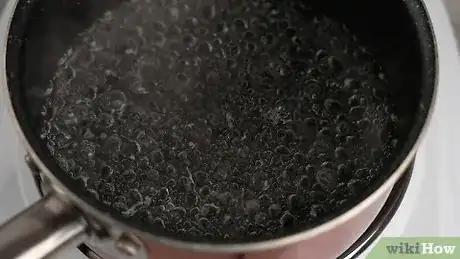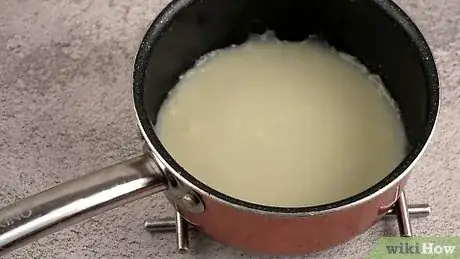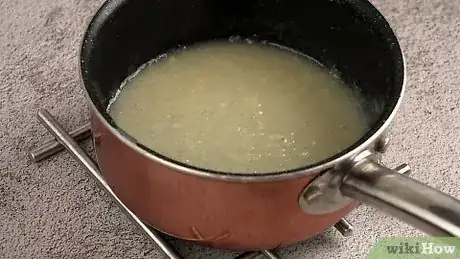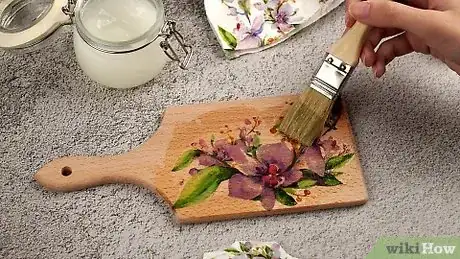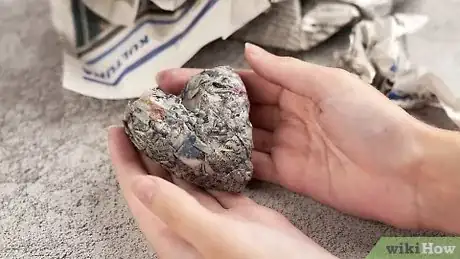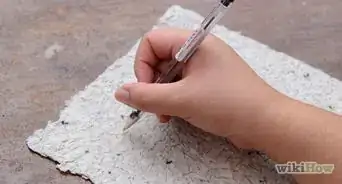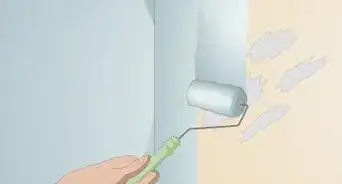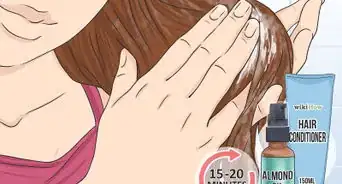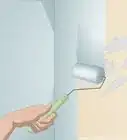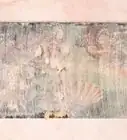wikiHow is a “wiki,” similar to Wikipedia, which means that many of our articles are co-written by multiple authors. To create this article, 31 people, some anonymous, worked to edit and improve it over time.
The wikiHow Video Team also followed the article's instructions and verified that they work.
This article has been viewed 366,439 times.
Learn more...
This mixture of vegetable starch and water has been used as an adhesive for centuries. Street artists and concert promoters use wheat paste to put up posters, craftspeople use it in papier-mâché or decoupage, and professional bookbinders use it for archival quality repair. This article takes you through the simple steps for making your own.
Things You Should Know
- Wheat paste is a simple DIY adhesive popular among street artists, guerilla marketers, and craft enthusiasts.
- You can make a simple wheat paste by whisking flour and cool water together and then adding it to boiling water.
- Apply the wheat paste using a paint brush or roller if you’re hanging a poster or art.
- Wheat paste is a great medium for decoupage or sculpting, and it can even repair a book’s binding.
Ingredients
- 3 Tbsp (50 mL) wheat flour or wheat starch
- a small amount of cool water
- 3/4 cup (200 mL) water for boiling
Optional:
- Additional 2 cups (500 mL) water (if you use a double boiler)
- Sugar or white glue (to strengthen a weak batch)
- Copper sulphate (a preservative and bug deterrent)
Steps
Making the Paste
-
1Boil a pot of water. Pour 3/4 cup (200 mL) water into a saucepan and bring to a boil.
-
2Whisk the flour and cool water together. Take 3 Tbsp (50 mL) flour or starch and gradually add room temperature water while stirring or whisking. Stop when all the flour is wet and the mixture is runny enough to pour.Advertisement
-
3Stir the runny mixture into the boiling water. Once the water is boiled, add the flour mixture while stirring constantly.
- The mixture will foam as it boils. Stirring or whisking prevents the mixture from boiling over, burning, or forming lumps.
- To reduce the chance of these mishaps, make a double boiler by placing the pot of wheat paste in a larger pot containing roughly 2 cups (500 mL) boiling water.
- If it thickens too much to stir, add more water.
-
4Remove from heat when thick and smooth. This can take anywhere from 2 to 10 minutes.
- If using starch, the mixture will be translucent when ready.
-
5Perfect the batch. In many cases the batch will be ready to use once it cools. However, it's easy to make adjustments while the goop is still hot:
- If the batch isn't sticky enough, stir in sugar or white glue. Begin with 3 Tbsp (50 mL) sugar or glue and add more if necessary.
- To preserve the mixture longer and deter bugs from eating it, mix in a small amount of copper sulphate.
-
6Let the mixture cool. Once at room temperature it should hold together as a gluey gelatinous paste.
- Each brand of flour and starch is a little different, so the exact consistency will vary. As long as there are no lumps it should work well.
- To remove lumps from the paste, strain it through a thin sieve or pair of tights.[1]
-
7Store in a sealed container in the refrigerator. Left at room temperature, the paste will begin to smell after 2 days and grow mold within a week. Even for pastes without copper sulphate, there are easy ways to extend this shelf life:
- Reheat unused paste in a covered container after each project to sterilize it.[2]
- Pour a little water on top of the paste for storage. If the paste is cool the water will sit on top of the paste and prevent mold from reaching it. Pour out the water again before using.
Using Paste to Attach Posters and Street Art
-
1Apply paste to a surface. Using your preferred tool (such as a paintbrush or your gloved hands), apply a liberal coat of paste to a wall. It will adhere strongly to wood, stone, and most other surfaces.
- Remove any lumps from the paste to prevent bubbles and lumps from tearing the poster.
- Attaching posters to other people's property or in public places is illegal in some regions.
-
2Stick the poster or art onto the pasted surface. Do this slowly, rolling it up from one side to prevent wrinkles from forming.
- For very large posters or high surfaces, a push broom may be useful.
-
3Apply additional paste over the poster. A glossy, sticky layer over the whole poster will dry into a strong adherent.[3]
- If you used whole wheat flour, the paste may have brown flecks or tinge. Apply such paste lightly to avoid obscuring the poster.
- If you don't have enough time or paste to cover the entire poster, prioritize the corners or furthest edges.
Art Projects Using Wheat Paste
-
1Decorate an Object using Decoupage. Wheat paste is an excellent glue to use in paper-based crafts.
-
2Create Sculptures from Waste Paper. Wheat paste is strong enough to support three dimensional sculptures as well, although you should mix in glue or sugar if your batch comes out too weak.
-
3Repair a Book's Binding. Many bookbinders prefer homemade paste to store bought glue, or use a mix of paste and specialized "PVA glue".
- Some bookbinders recommend using starch powder rather than flour to create a more transparent paste.
Community Q&A
-
QuestionIs there a way to get posters of some of the street art already created?
 Community AnswerTake a picture and take that to a photo shop to make a poster yourself.
Community AnswerTake a picture and take that to a photo shop to make a poster yourself.
Warnings
- Do not add super glue, rubber cement, or other volatile adhesives to your paste.⧼thumbs_response⧽
Things You'll Need
For making paste:
- Bowl
- Mixing spoon or whisk
- Saucepan or double boiler
For attaching posters, you need one or more of:
- Wide paintbrush
- Paint roller
- Broom
- Gloves you don't mind damaging
References
About This Article
To make a simple wheat paste adhesive, bring ¾ cup (200 mL) of water to a boil in a saucepan. Place 3 tablespoons (23 g) of flour or starch in a small bowl and mix in just enough room-temperature water so that the mixture is runny enough to pour. Stir the mixture into the boiling water and keep stirring constantly until the paste is thick and smooth. This usually takes around 2 to 10 minutes. If the mixture is too thick, add a little more water. If it’s not sticky enough, mix in a few spoonfuls of sugar or white glue. Let the wheat paste cool to room temperature, then transfer it to an airtight container and store it in the fridge until you’re ready to use it. To learn how to fix your wheat paste if it's too thick or thin, scroll down!
